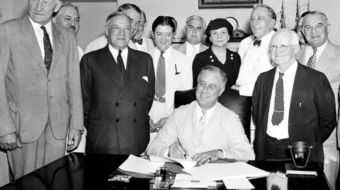
The big news in this morning’s jobs report is that the unemployment rate edged down to 3.9 percent, the first time it has gone below 4.0 percent since 2000.
Unfortunately, this dip was accompanied by a fall in labor force participation. In other words, it fell for the “wrong” reasons—not because of a surge in the number of people getting jobs, but because of a rise in the number of people out of the labor force. Both the labor force participation rate and the employment-to-population ratio ticked down 0.1 percentage points.
Only 63 percent of those who could potentially be in the labor force actually are counted as part of the work force. Those left out have either given up looking for jobs or never actually held a job – a dismal figure for an economically advanced country like the United States.
Turning to the payroll survey, the economy added 164,000 jobs last month. All told, average monthly job creation over the past year is 190,000. After a higher-than-expected February and a lower-than-expected March, April’s number is a little soft, but within a reasonable distance of recent trends. It must be noted, however, that the number of jobs added last month are barely enough to keep up with population growth. Then too the jobs created last month and during the recent period are, by and large, not the kind of good-paying union jobs that should be created.
Notably, nominal wage growth continues to fall short, rising only 2.6 percent over the year. This is clear evidence that despite the officially low unemployment rate, the economy is not yet at full employment.
John Wojcik contributed to this story.










